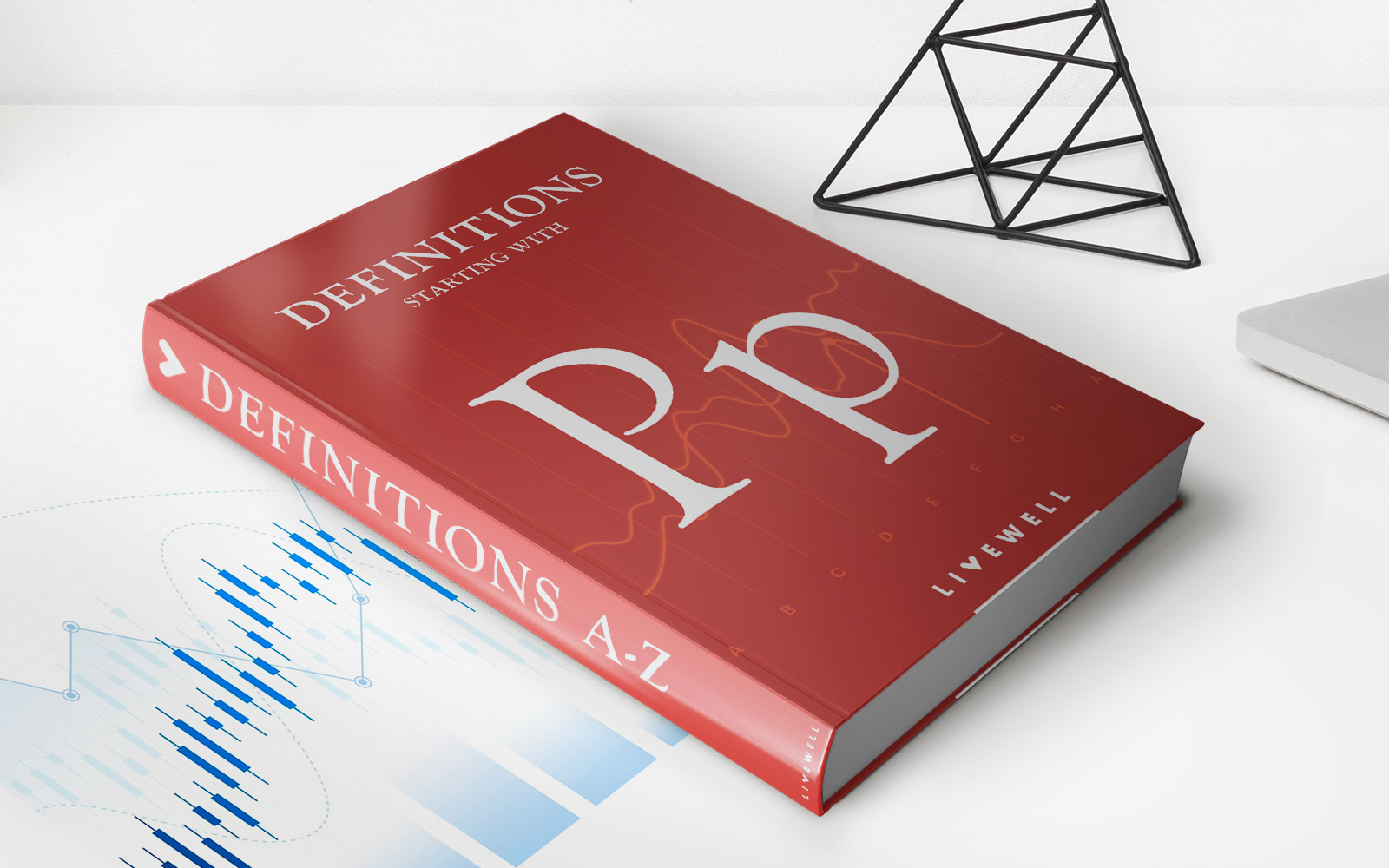

Finance
How To Calculate Sears Card Minimum Payment
Published: February 26, 2024
Learn how to calculate the minimum payment for your Sears card and manage your finances effectively. Find out the best strategies for staying on top of your credit card payments.
(Many of the links in this article redirect to a specific reviewed product. Your purchase of these products through affiliate links helps to generate commission for LiveWell, at no extra cost. Learn more)
Table of Contents
Introduction
Understanding the Importance of the Sears Card Minimum Payment
The Sears Card, a popular choice for many consumers, offers a range of benefits, including rewards and special financing options. However, like all credit cards, it requires diligent management to avoid unnecessary fees and interest charges. One crucial aspect of responsible credit card usage is understanding and effectively managing the minimum payment.
In this comprehensive guide, we will delve into the intricacies of the Sears Card minimum payment, shedding light on the factors that influence it and providing a step-by-step approach to calculating it accurately. By gaining a thorough understanding of the minimum payment requirement, cardholders can make informed financial decisions and maintain control over their credit card balances.
Managing credit card payments, including the minimum amount due, is a fundamental aspect of maintaining a healthy financial profile. With this in mind, let's explore the nuances of the Sears Card minimum payment and equip cardholders with the knowledge and strategies necessary to navigate this aspect of credit card ownership successfully.
Understanding the Sears Card Minimum Payment
When it comes to credit card management, understanding the minimum payment is crucial. The minimum payment is the smallest amount a cardholder must pay by the due date to keep the account in good standing. For Sears Cardholders, this figure is especially important, as failing to meet the minimum payment can result in late fees, increased interest rates, and potential damage to one’s credit score.
It’s important to note that while making the minimum payment keeps the account current, it may not be enough to make significant progress in paying off the balance. This is due to the fact that the minimum payment is typically calculated as a percentage of the outstanding balance, often with a minimum dollar amount, plus any interest and fees accrued during the billing cycle.
Understanding the implications of making only the minimum payment can help cardholders make informed decisions about their finances. By recognizing that carrying a balance and making only minimum payments can lead to long-term interest costs and prolonged debt, individuals can strive to pay more than the minimum whenever possible.
Furthermore, grasping the concept of the minimum payment empowers cardholders to take control of their financial well-being. By making payments above the minimum, individuals can work towards reducing their balances and ultimately saving on interest charges.
Next, we’ll explore the various factors that influence the minimum payment on a Sears Card, shedding light on the elements that contribute to this essential aspect of credit card management.
Factors Affecting the Minimum Payment
Several key factors influence the minimum payment on a Sears Card, each playing a significant role in determining the amount due each billing cycle. Understanding these factors is essential for cardholders seeking to manage their finances effectively and avoid unnecessary fees and charges.
- Outstanding Balance: The most significant factor in calculating the minimum payment is the outstanding balance on the Sears Card. Typically, the minimum payment is a percentage of this balance, often ranging from 1% to 3% of the total amount owed. As the balance fluctuates, so does the minimum payment due.
- Interest Rate: The annual percentage rate (APR) applied to the Sears Card balance directly impacts the minimum payment. Higher interest rates result in larger portions of the minimum payment going towards interest, making it more challenging to reduce the principal balance.
- Fixed Fees and Charges: In addition to the percentage of the outstanding balance, the minimum payment may include fixed fees and charges, such as late fees or over-limit fees. These additional costs can increase the minimum payment amount, particularly if they have been incurred during the billing cycle.
- Payment History: Cardholders’ payment history, including any missed or late payments, can impact the minimum payment due. A history of late payments may lead to increased minimum payment amounts as the card issuer seeks to mitigate the risk associated with the account.
- Credit Limit Utilization: Utilization of the Sears Card’s credit limit, or the percentage of available credit being used, can influence the minimum payment. Higher utilization rates may result in larger minimum payments as the card issuer assesses the risk associated with extended credit usage.
By considering these factors, Sears Cardholders can gain insight into the dynamics of the minimum payment calculation and take proactive steps to manage their credit card balances effectively. With a clear understanding of the elements shaping the minimum payment, cardholders are better equipped to make informed financial decisions and maintain control over their credit card obligations.
Calculating the Sears Card Minimum Payment
Calculating the minimum payment on a Sears Card involves a straightforward yet essential process. While the specific formula may vary slightly among credit card issuers, the fundamental components remain consistent. By understanding how the minimum payment is calculated, cardholders can anticipate their financial obligations accurately and make informed decisions regarding their credit card management.
The typical method for calculating the minimum payment on a Sears Card involves considering a percentage of the outstanding balance, along with any interest and fees accrued during the billing cycle. This percentage, often ranging from 1% to 3% of the total balance, forms the baseline for the minimum payment amount.
Additionally, any interest charges and applicable fees incurred during the billing cycle are added to the percentage of the outstanding balance to determine the total minimum payment due. This comprehensive approach ensures that cardholders address not only the principal balance but also any additional costs accrued, thereby maintaining the account in good standing.
For example, if a Sears Card has an outstanding balance of $1,000 and the minimum payment percentage is 2%, the baseline minimum payment would be $20. If the interest and fees for the billing cycle amount to $30, the total minimum payment due would be $50 ($20 + $30).
By grasping this calculation method, Sears Cardholders can plan their finances effectively and strive to pay more than the minimum whenever possible. Doing so not only reduces the overall interest costs but also accelerates progress toward paying off the balance, ultimately promoting financial well-being and stability.
Understanding the process of calculating the minimum payment empowers cardholders to approach their credit card obligations strategically, enabling them to make prudent financial choices and maintain control over their Sears Card balances.
Tips for Managing Your Sears Card Minimum Payment
Effectively managing the minimum payment on your Sears Card is essential for maintaining financial stability and minimizing unnecessary fees and interest charges. By implementing the following tips, cardholders can navigate their credit card obligations with confidence and make informed decisions to support their financial well-being.
- Pay More Than the Minimum: While the minimum payment keeps the account current, it is beneficial to pay more whenever possible. By doing so, cardholders can reduce the overall interest costs and work towards paying off the balance more efficiently.
- Create a Budget: Establishing a budget that includes provisions for credit card payments can help ensure that the minimum payment and additional contributions are factored into the overall financial plan. This proactive approach promotes responsible spending and timely bill payments.
- Monitor Your Spending: Keeping track of your Sears Card usage and overall spending habits can prevent excessive balances and facilitate more manageable minimum payments. Awareness of expenditures empowers cardholders to make mindful purchasing decisions.
- Set Up Payment Reminders: Missing a payment can lead to late fees and potential damage to your credit score. Setting up payment reminders, whether through calendar alerts or automatic payments, can help ensure that the minimum payment is submitted on time each month.
- Understand Your Statement: Reviewing your Sears Card statement regularly can provide insights into your minimum payment, including any additional fees or charges. Understanding the components of your statement empowers you to address any discrepancies and manage your payments effectively.
- Seek Financial Assistance if Needed: If you encounter financial challenges that may impact your ability to make the minimum payment, consider reaching out to the card issuer. They may offer assistance programs or alternative payment arrangements to help you navigate temporary financial hardships.
By incorporating these tips into their financial practices, Sears Cardholders can proactively manage their minimum payments, reduce interest costs, and work towards achieving greater financial stability. Taking a strategic approach to credit card management empowers individuals to make informed decisions and maintain control over their financial well-being.
Conclusion
Mastering the management of your Sears Card minimum payment is a fundamental aspect of responsible credit card ownership. By gaining a comprehensive understanding of the factors influencing the minimum payment, the calculation process, and effective management strategies, cardholders can navigate their credit card obligations with confidence and financial acumen.
Recognizing the importance of paying more than the minimum whenever possible empowers individuals to reduce interest costs and make meaningful progress in paying off their balances. Implementing prudent financial practices, such as budgeting, monitoring spending, and setting up payment reminders, can help ensure that the minimum payment is met consistently, promoting financial stability and creditworthiness.
Furthermore, maintaining open communication with the card issuer and seeking assistance when facing financial challenges can provide valuable support and guidance, enabling cardholders to address temporary hardships effectively.
By leveraging the insights and tips presented in this guide, Sears Cardholders can approach their credit card management proactively, make informed financial decisions, and ultimately achieve greater control over their financial well-being. Understanding the nuances of the minimum payment and its impact on overall financial health empowers individuals to navigate their credit card obligations with confidence and prudence.
In conclusion, by prioritizing financial literacy, diligent management, and proactive decision-making, Sears Cardholders can optimize their credit card usage, minimize unnecessary costs, and work towards achieving their long-term financial goals.













